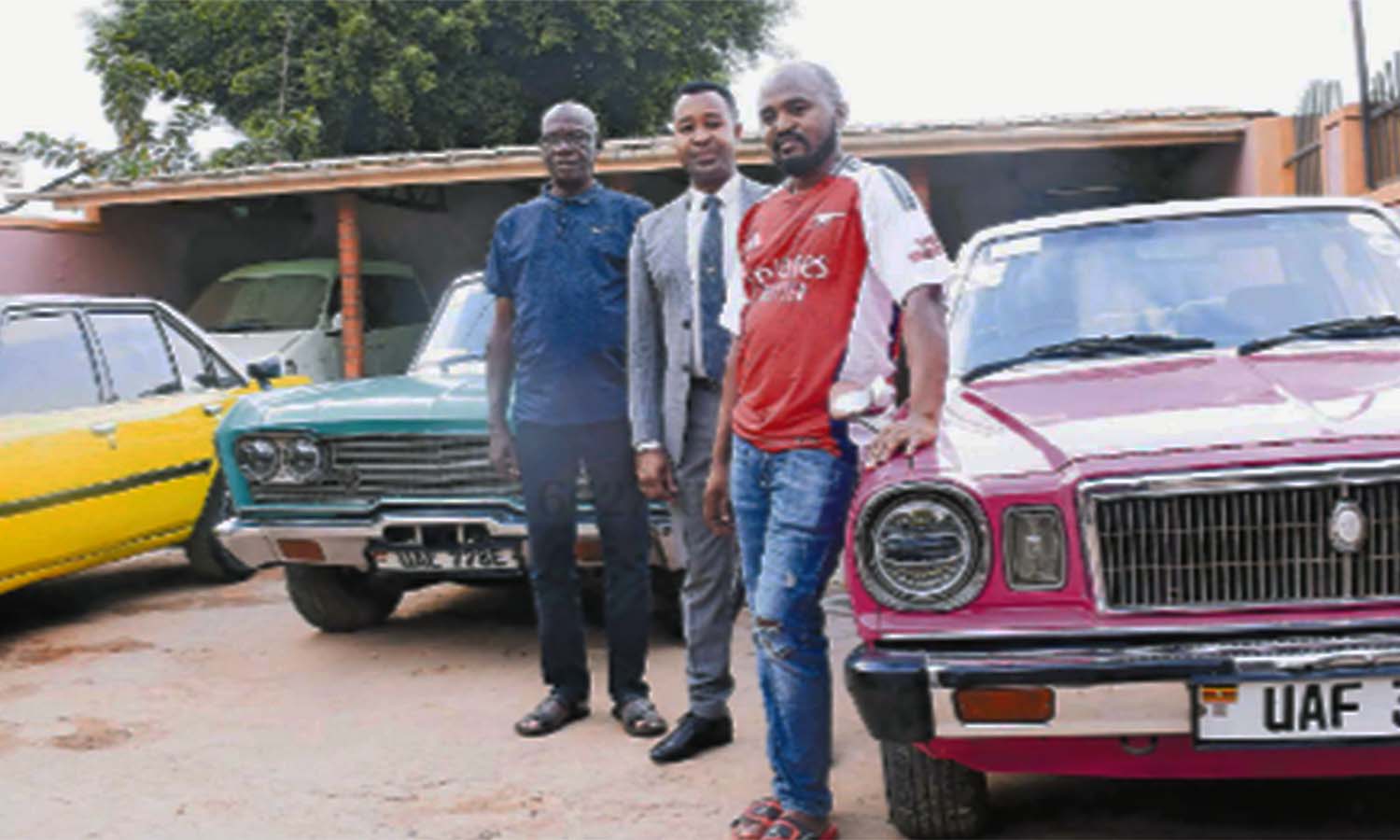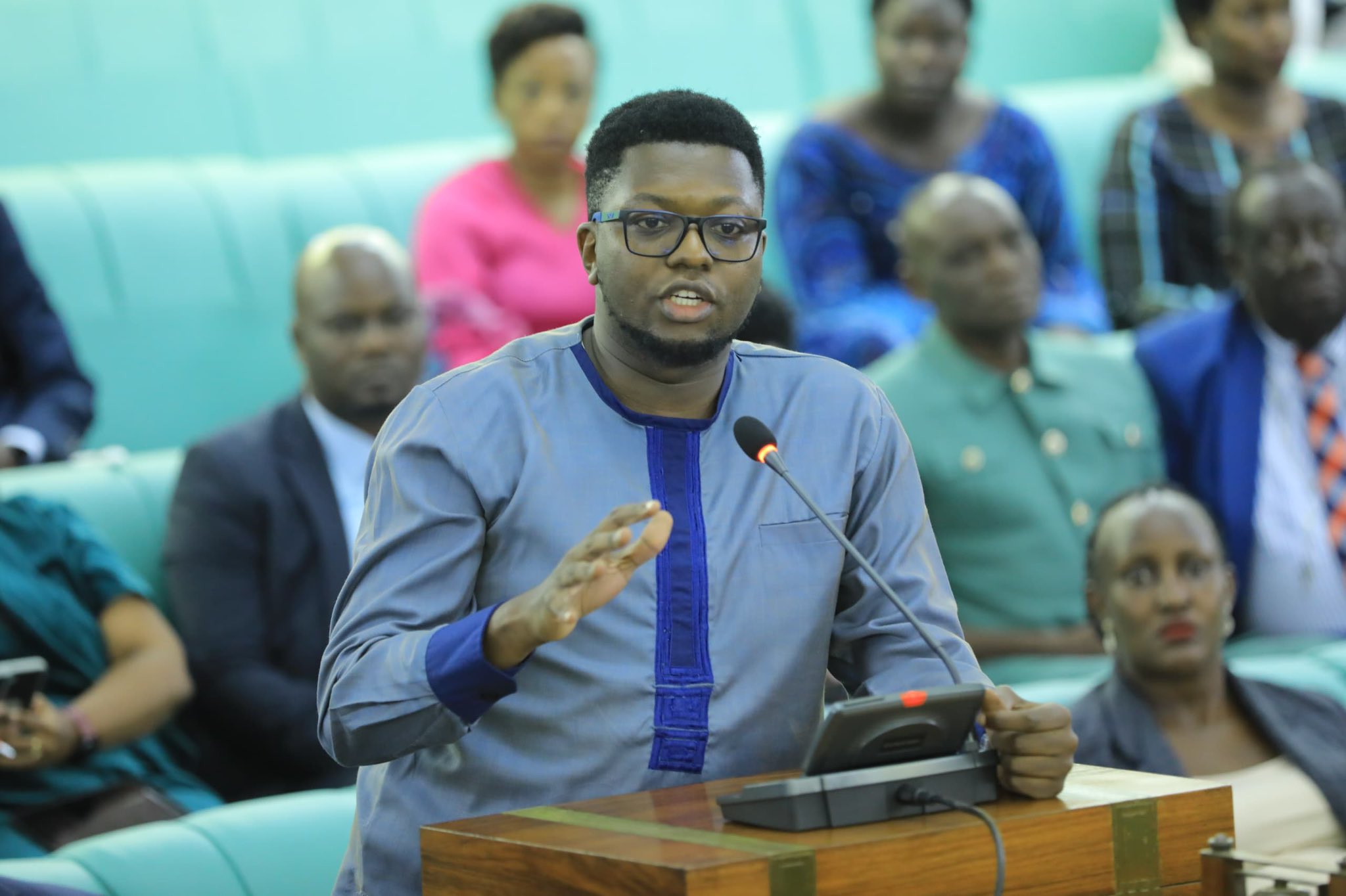Nambasa makes a living from flying drones

Nambasa operates the drone while filming in Karamoja. She has travelled across the country with her drone. PHOTO | GEORGE KATONGOLE
What you need to know:
- Drones have become just another necessary device in the toolbox for film creators, both big and small. At many social functions, drones are becoming more popular on budget, so they have become practically indispensable. For 27-year-old Sabrina Nambasa Kalibbala, commonly known as Brina Drone, flying drones with a contagious smile is her calling.
Sabrina Nambasa Kalibbala has realised that drones are an extremely useful tool for her production work pulling off epic shots and earning her a living.
The 27-year-old is the proprietor of Tusk Media, providing professional advertising and media content, specialising in film, photography and production services.
Nambasa is at the helm of media production at Tusk Media based in Kisaasi, Kampala including professional advertising, media content, branding, film, photography and production services. However, her purpose is to make professional media production more accessible. Her emphasis is drone piloting.
“It is something that excites me and fills me with emotion,” Nambasa says.
Starting out
Piloting a drone was not Nambasa’s first choice - that slot goes to deejaying.
“When I was in Senior Four vocation, I told my dad about it. He was mad at me when I first mentioned deejaying. When he asked what else I wanted two years later, I told him media production on television,” Nambasa recalls.
Nambasa enrolled at the Uganda Film and Television Institute in Rubaga, Kampala where she gained knowledge about documentary production, short and full length feature film making as well as commercials.
When her A-Level results were released, her dad wanted her to study international air travel, which she did at the International Air Transport Association (IATA) authorised training centre of Career Institute in Kampala.
“Since travel was not my thing, I returned to production. During the course of my work, I landed on someone at a function, who had a drone. I got so interested in flying it. Since I had all the basics of camera composition, I thought the only missing bit was to fly the drone,” she says.
In 2016, she started training how to man the drone. After three months, she was already a master and was ready to hit the skies.
But she required capital yet she had not accumulated that money.
“My dad gave me a loan of Shs5m which I used to buy my first drone, a Phantom 3 professional drone, and I started working. By then it was Shs5m but now it is about Shs3.5m,” Nambasa says.
She used it until 2017 when she bought a new drone and from that time they kept coming. During the 2020 Covid-19 lockdown, she sold off all the three she had because they had become rusty. From the accumulated money, she bought a DJI Mavic 2 Pro for Shs7.5m.
Typical day
Preparation is key in her job. The first task is to ensure the batteries are fully charged. The battery life is 31 minutes in optimal conditions during flight time. She also charges, the controller batteries and her iPad.

People in Kotido marvel at a drone during filming.
“Before I go to bed I make sure I have packed everything such that I avoid scenarios of forgetting at home any component,” she says. Nambasa also prepares herself mentally.
“On a personal basis, if I am disturbed in the mind, I easily make mistakes. Mistakes can be so costly moneywise,” she says, recalling instances that led to crashing her first drone.
She recollects having an argument with a workmate and they kept calling her while at the set arguing about the same issue they have had overnight.
“My mind was so distracted. When I turned on the drone, I flew it into electricity wires and it got captured. It dropped the battery and fell down. Just like that. It worked again but kept on developing mechanical issues until I decided to sell it off,” she says.
Her major therapy is music including, gospel music that speaks to her heart and any other interesting music.
Kampala, the worst place to fly a drone
As a drone pilot, she has been across the country. Her best destination remains Kibaale National Park.
“We had permission from Uganda Wildlife Authority (UWA) and I really got many good pictures. But also Karamoja. I love their scenery, the landscape, the vegetation and the people,” she says.
Most clients are based in the city centre but she says Kampala is the worst place to film.
“First of all, everyone who sees the drone thinks you are going to spy on them. It also has a lot of birds and security is high. Everyone is on the look,” she says.
Nambasa worked with UWA through connections with George Owoyesigire, the deputy director for Community Conservation at the Uganda Wildlife Authority.
Owoyesigire had been nominated for the Tusk Conservation Awards in 2020, launched by Prince William in 2013 to celebrate the work of leading conservationists in Africa.
He was nominated for his role in improving relations between local communities and wildlife by promoting benefit sharing; investment in wildlife enterprises, addressing human-wildlife conflict issues and promoting conservation education. He also implemented the bee keeping project, an initiative that uses bees as a deterrent against elephant crop raiding.
Nambasa was hired to profile Owoyesigire’s work in Kibaale National Park. She was paid $400 for the three days’ work.
Normally, for a day’s work upcountry, she charges Shs500,000 while around Kampala, her services are available for about Shs300,000.
“I do not say that because I am going to work for you for two minutes or three that I will reduce my price. No. I count the day’s work and the rights to your images,” she says.
She asks for permission to use some of their images to promote her work on social media. But she backs it up for future use just in case the client lost theirs.
Her dream destination is to film in Seychelles. The Seychelles are a photographer’s impeccable destination. Each of the 115 islands that make up the Indian Ocean archipelago is so idyllic, rendering enviably perfect images. Towering palm trees cast cooling shadows across pristine sugar-white sand.
At dusk, the setting sun’s pink and orange hues caress a horizon of azure waves. Meanwhile, giant granite boulders and lush tropical forests beg the lens to focus on their immense beauty.
“I love the blue water and I love how their cottages are lifted above the water. I have not been there but I see fascinating scenery on Instagram,” Nambasa says.
On the road
Nambasa, is in a romantic relationship and faces a balancing act. She is on the road most of the time. With her drone, Nambasa says, she has travelled to most parts of the country working for different clients.
“I love travelling. My travel days are the best,” she says stressing that being on the road most of the time is a fulfilment of her desire to become financially independent.
“There is no way someone is going to say you don’t go because of family. I am looking for money. I always try to keep my family in the loop about where I am going so that they can keep track of what I am doing,” she says.
Her favourite dress code are dark coloured jeans, black t-shirts and Crocs shoes. She says they make her feel comfortable in most shooting conditions.
Security issues
Accoring to the laws of the drone by DJI Technology Company, that supplies most of the consumer drones used in the world, for pilots looking to be part of this thriving industry, the journey begins with being compliant and getting the necessary training to become a qualified drone pilot.
Nambasa agrees that there is need for skilled drone operators. DJI require a pilot to go to an unmanned aerial vehicle (UAV), school for six months. But there is no institute offering it in Uganda.
Afterwards, one is supposed to be licenced with the drone.
“What we do in Uganda is to train from someone who already has knowledge, especially if you come with your drone. Others use YouTube tutorials. Within let’s say a month, you will be good to go. But people forget there are rules despite the fact that we are in Uganda,” she says.
The situation for drone pilots in Uganda is quite complicated. The country is working on new legislation for the use of drones, but the following rules apply:
One of them is the import licence and an application to the Office of the Chief of Defence Forces who will decide, along with the Special Force Command and the Civil Aviation Authority (CAA), whether the drone will not pose a threat to national security.
After a security clearance letter, you can apply formally for a permit from the CAA. In your application, you must specify the purpose of the flight, drone details (including model/manufacturer/mounted equipment).
“Sometimes you ask for permission but they prolong the entire process. Sometimes they want to extort money. Yet when you do it the “illegal way” apparently, you just shoot and within two or three minutes you are done,” she says.
Twice, Nambasa has had encounters with security and has tried to talk nice and apologise.
“Legal issues are a bit weird and hard to handle. Of course when a security person comes you have to explain and they let you go. Others take your drone, others are interested in the content on the card. It depends on which situation you are faced with,” she says.
She explains that most of the drones used in Uganda are for recreational purposes.
“Our drones do not have the capacity of spying. They are designed for simple work. To spy on something you actually need more than 30 minutes in the air.”
Procedures
By law, flying a drone in Uganda must be done by a certified drone pilot. Scrutiny of all drone pilot licences is done by the Civil Aviation Authority, which is in charge of the Ugandan skies.
There are places earmarked as No-fly zones such as State House Nakasero and Entebbe, Entebbe International Airport, State Lodges and the Presidential Ranch in Gomba.
Flying over restricted airspace is an offence which can lead to confiscating of the drone or imprisonment or both.
Since drones are very sensitive issues, one is advised to avoid flying within 8km from the airport or listed no-fly zones.
Flight should be below 400ft during day or before sunrise at under 160km/hr.




